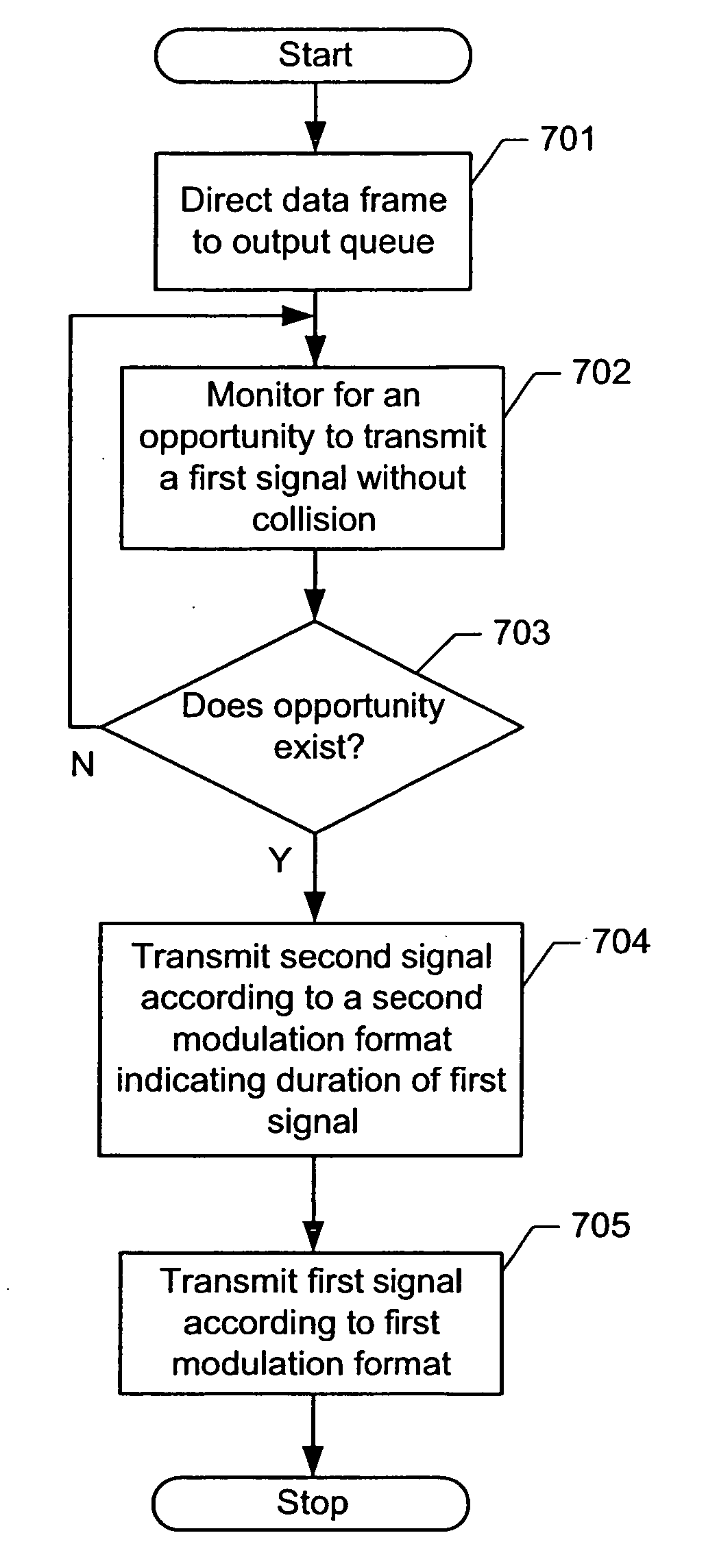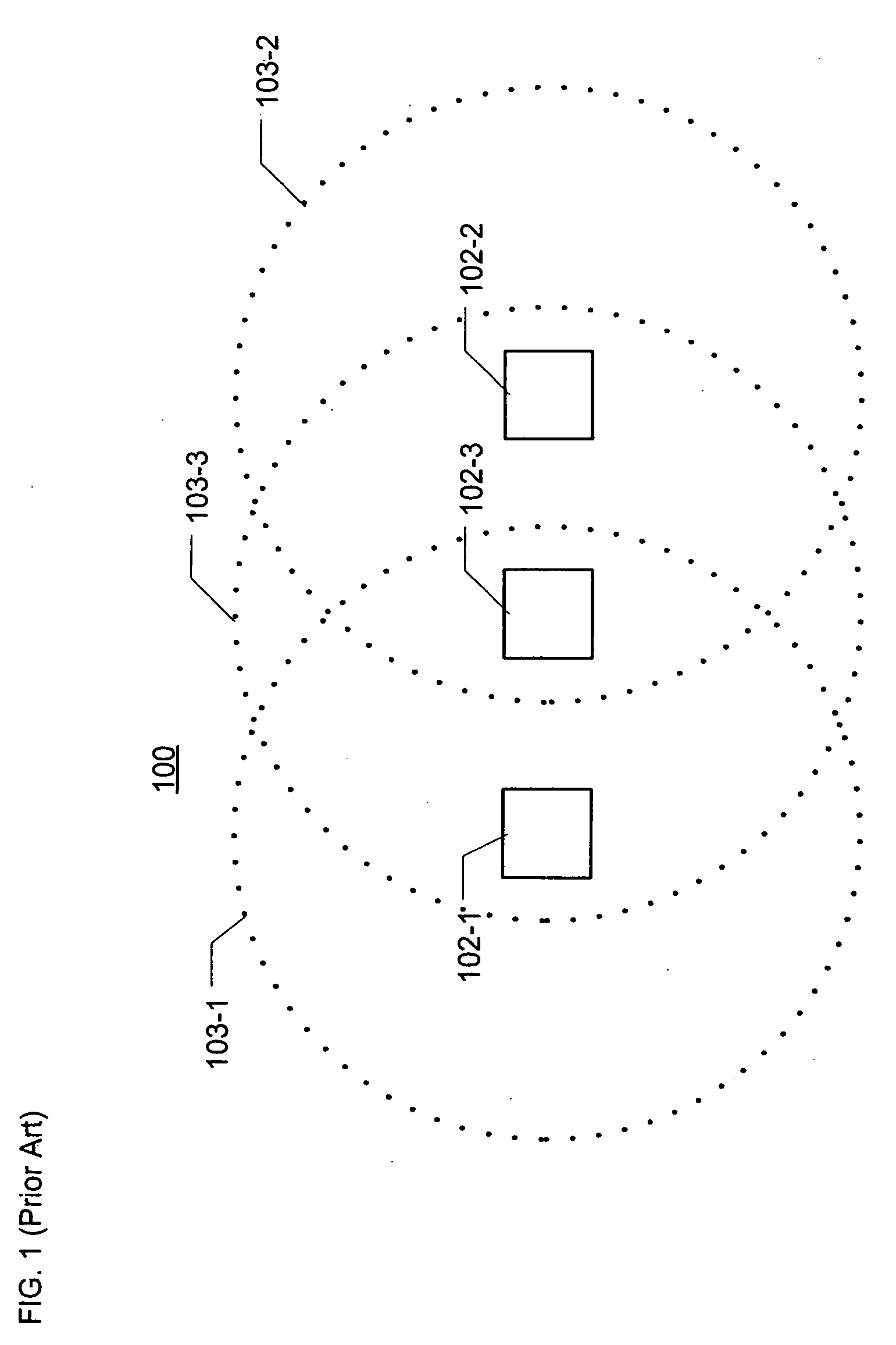Transmission protection for communications networks having stations operating with different modulation formats
a transmission protection and communication network technology, applied in data switching networks, orthogonal multiplexes, multiplex communication, etc., can solve the problems of not being compatible with 802.11b devices, the speed of 802.11(b) is only one-tenth that of its wired counterpart, ieee 802.3, etc., and achieve the effect of improving the modulation forma
- Summary
- Abstract
- Description
- Claims
- Application Information
AI Technical Summary
Benefits of technology
Problems solved by technology
Method used
Image
Examples
Embodiment Construction
[0030]FIG. 4 depicts a schematic diagram of the illustrative embodiment of the present invention, telecommunications system 400, which transmits signals between stations (i.e., nodes) 402-1 through 402-N, wherein N is a positive integer, over shared communications network 401. Each of stations 402-1 through 402-N can be a stationary, portable, or mobile type with different types in the mix.
[0031] In accordance with the illustrative embodiment, telecommunications system 400 is a packet-switched network, in contrast to a circuit-switched network, as is well known to those skilled in the art. In other words, a macro data structure (e.g., a text file, a portion of a voice conversation, etc.) of indefinite size is not necessarily transmitted across shared communications network 401 intact, but rather might be transmitted in small pieces.
[0032] Each of these small pieces is encapsulated into a data structure called a “data frame,” and each data frame traverses shared communications netw...
PUM
 Login to View More
Login to View More Abstract
Description
Claims
Application Information
 Login to View More
Login to View More - R&D
- Intellectual Property
- Life Sciences
- Materials
- Tech Scout
- Unparalleled Data Quality
- Higher Quality Content
- 60% Fewer Hallucinations
Browse by: Latest US Patents, China's latest patents, Technical Efficacy Thesaurus, Application Domain, Technology Topic, Popular Technical Reports.
© 2025 PatSnap. All rights reserved.Legal|Privacy policy|Modern Slavery Act Transparency Statement|Sitemap|About US| Contact US: help@patsnap.com



